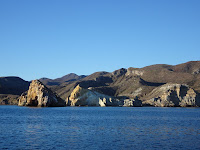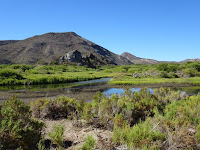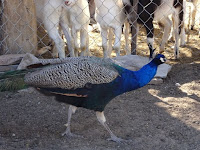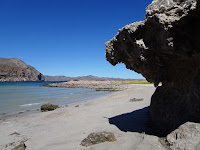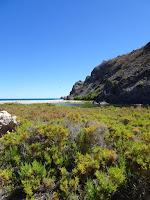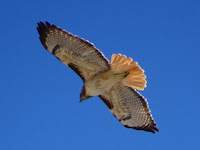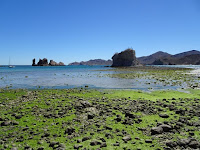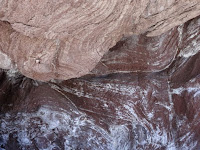As over the previous three days, the wind was out of the north at around fifteen knots. Loreto is due east of Ballandra, so we had a fairly boisterous ride as the cross seas rolled Begonia back and forth as they passed beneath us.
Not surprisingly, we were the only ones off of the harbor entrance when we set the anchor. The seas were a little bit calmer, but we were still pitching up and down in two-foot chop. My reasoning had been this: The winds were supposed to be calm after sunset. If we set the anchor when they, uh, weren’t, and it held, we would be ready to go ashore first thing the next morning. We would stay aboard until then and would be able to attend quickly to any dragging issues. Winds for the next two days would be milder, so we could enjoy our time ashore without worry.

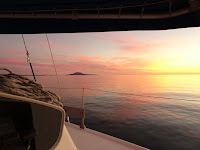
A fun sail and we arrive in Loreto in plenty of time for sunset
Our plan worked. Just after sunrise, we rowed ashore on a flat sea.
Loreto is a wonderful, charming little town. We walked to the plaza in the center along cobbled streets covered by pergolas of topiary. Fronting the square is the first mission in Baja, founded by the Jesuits, out from which all of the other missions in both Alta (U.S.) and Baja California spread. They had a nice museum detailing their history and the influence the missions had on the indigenous populations that were centered in the area before their arrival. The Jesuits very diligently mapped the Sea of Cortez as well as taking census and copying and classifying native languages. Most telling was the records of the native population declining 90% in the first seventy years after their arrival.

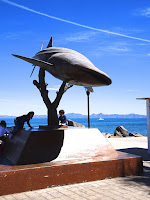




Around Loreto


A mix of fun (eating & sightseeing) and shopping (mostly fun!)
After the mission, we meandered through town, poking into this shop or that for one thing or another that we wanted or needed without actually buying anything. After our second circuit, we picked a restaurant for lunch, then we made one more round, this time making purchases and filling our bags until they each felt like they contained their own cinder block.
We rowed our booty back to Begonia, stowed it, and then headed back into town for the tail end of Loreto’s Carnaval (Spanish spelling) festivities.
On the waterfront were all of the makings of a state fair: dodgy rides driven in on semis, booths tempting you to try your luck and, because this is México, LOTS of food stalls offering every manner of culinary delight.
We walked along the shore road until we spotted lots of color on a side road leading to the town center. Several big tractor trucks were parked along the side of the road with parade floats on their trailers. Alongside, their teenage and tween occupants were fitfully tugging at their colorful sequin and spandex outfits. Most of the floats appeared to be school projects. Maryanne asked a few of the people if they wouldn’t mind having their picture taken, since they were made up so beautifully. To my surprise, instead of teenage shyness, they all became smiles as they bunched up to mug for her.
We asked a local policeman about the parade route. He said basically, “They’re coming up this road, and going down that road.”
That road was closer, so we went there to stake out a spot. Our spot ended up being right by a Uruguayo pizza place with raised outdoor seating. We waited for the couple sitting at what we decided was the best table to leave, and then pounced on it before anybody else could. Now we had the perfect parade viewing setup while dining.
The service there was pretty slow, which was perfect, because it took the parade a long time to make it to us. It wasn’t like any parade I have ever seen. The first vehicle arrived and stopped. It was a band loaded into the back of a farm truck that notably had a drummer whose high-hat (cymbal) would catch fire every time he struck it. They played a couple of songs and then they moved on.






Carnival 2017 - A mini Mardi Gras celebration!
About a mile behind them was the first float. They stopped, did their bit for a while and then moved on. Carnaval in Loreto is no Mardi Gras. {Maryanne: Technically it is indeed Mardi Gras, but certainly not on the Rio scale, but we were so happy to get to see it}. We decided there was no way we would be able to linger over dinner long enough for the whole parade. We paid our bill and then walked the route in reverse hoping to speed things up a bit.
When we got to the light (Loreto has literally one traffic light junction), we saw a crowd of people cheering on our favorites – the one’s who were so nice about us taking their photos. For lack of knowing the group’s proper name, we’ll call them the Carmen Miranda Fruit Hats. I know, I know, but they ALL had hats with fruit on them! The spot under the traffic light was the judging area. They were going all out.
We couldn’t see over the crowd, so we retraced our steps back to our last viewing spot and waited for them, and waited and waited. When they finally came by, they stopped and gave us a little mini version of their act. We liked them so much, we just joined them and walked behind their float all of the way back to the malecón (pier/wharf). We later learned that they won the award for best group. Congratulations to them!
Back at the harbor, the fair was in full swing. Loud Latin music boomed from competing speakers as kids with sticky faces gazed wide-eyed at the spinning colored lights of the rides. Teenagers dared each other to get on the scary ones and the adults stood with open containers talking to smiling Policia. Everyone was having a really good time.
We got up a little later than usual the next morning and then rowed into town to do the rest of our shopping. Oh yeah, there’s more.
As we were tying up, we met Ed and Charlene, who were trying to figure out where the dinghy dock was so they could tie up their kayak. That was strange. There was one other boat anchored by the breakwater. We had already met the owners and they weren’t them. It turns out we saw their boat three days ago when we were anchored at Coronados island. They were still there.
Their boat has only a small small electric engine, about like our Torqueedo we use on the dinghy. Since sails are not much good in calm conditions, so they just came from over the horizon in their kayak to stock up.
We had brunch with them before we split up on our respective shopping trips. They were pretty interesting. Their boat has over four times the solar capacity of Begonia. Ed designed and built many of its electrical features, including the electric drive motor. When they couldn’t find an anchor they liked, he built one – not the tie a piece of chain to a truck rim type, but a proper one.
It was so nice to be chatting to such interesting folks, and since Begonia was only a little out of their way, relatively, on their trip home, we invited them to stop by later for a look.
We arrived home fully laden, dumped our bags and five minutes later, here they came, looking fresh as ever. We gave them the tour, talked for a bit and then they needed to be off in order to get back to their boat by sunset. I’m sure they were back well before that. They’re faster than Begonia with that kayak. Hopefully, we’ll be able to meet up with them again somewhere down the road.

